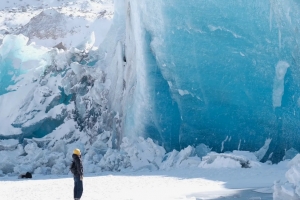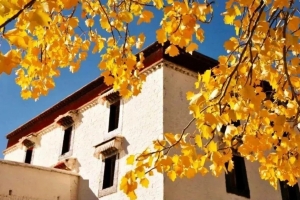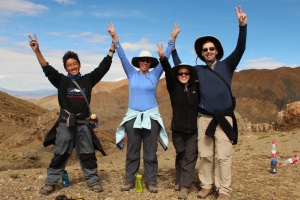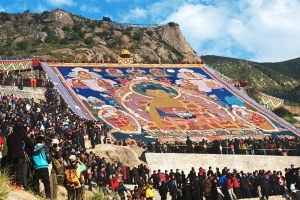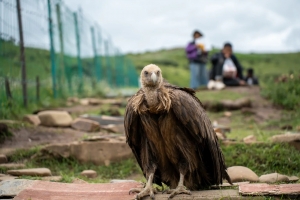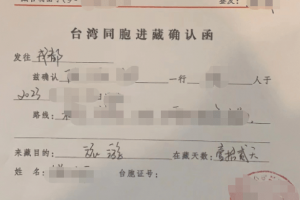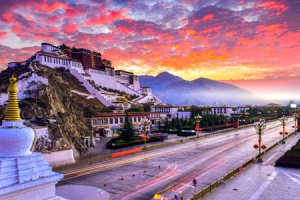Tibet is not only a land of monasteries and high alpine lakes – it’s also threaded by some of the planet’s most dramatic highways. Overland travel to and inside Tibet is an experience: long distances, huge elevation changes, spectacular scenery and real logistical considerations. This guide explains the major roads that connect Tibet with the rest of China and neighbouring countries, practical planning and safety tips, vehicle and schedule options, seasonal constraints, and smart advice for travellers who want to explore Tibet by road.
Quick Facts Every Overland Traveller Should Know
- Tibet’s main overland arteries include the Qinghai–Tibet Highway (Xining–Lhasa), the Sichuan–Tibet Highway (G318 / G317 branches), the Yunnan–Tibet Highway (part of G214), the Xinjiang–Tibet Highway (G219) and the China–Nepal Friendship Highway linking Lhasa with Kathmandu.
- Road distances are long and altitude climbs are steep: allow multiple days for any overland transfer and build acclimatisation time into your itinerary.
- Road conditions vary from well-engineered asphalt on major highways to narrow and remote mountain tracks on seasonal routes; winter and monsoon weather can close passes.
- Overland travel is culturally and visually rewarding but requires planning: vehicle choice, permits, experienced drivers/guides and contingency plans are essential.
Qinghai–Tibet Highway: The Iconic Route from Xining to Lhasa
The Qinghai–Tibet Highway (the Xining–Lhasa portion of China National Highway 109) is widely known as the world’s highest and one of the longest continuous asphalt highways. It climbs across the Qinghai Plateau and the Kunlun and Tanggula ranges, crossing numerous high passes and remote stretches before entering the Tibetan heartland. This route is the busiest and most reliable overland connection to Lhasa and is the backbone of cargo logistics to Tibet as well as a popular traveller corridor.
Key Route Highlights
- Start: Xining (Qinghai) — then west through Golmud and into the Tibetan Plateau.
- Important passes and plateaus: Riyue Mountain, Kunlun Mountain Pass, Wudaoliang, Fenghuo Mountain Pass, Yanshiping and Danggula Pass. The route crosses many high tundra zones and multiple river headwaters before reaching Nagqu and finally Lhasa.
- Distance: The total Xining–Lhasa stretch is roughly 1,900–1,950 km, with the Golmud–Lhasa section commonly cited as about 1,160 km. Travel times have reduced since road upgrades; modern drives can be completed in several long days with experienced drivers.
Practical Advice For Travellers
- Why choose it: The Qinghai–Tibet Highway is the most dependable all-year route into central Tibet; it’s comparatively well-maintained and used by freight and tourist vehicles alike.
- Timing: If you want a steady, scenic overland experience with better road surfaces and lower risk of seasonal closure, this is the primary choice.
- Vehicle: Comfortable SUVs, 4×4 minibuses or coach vehicles are recommended. Expect long driving days and multiple high-altitude passes.
- Logistics: Most international visitors travel on organised overland tours or hire drivers through licensed operators who handle permits and roadside issues.

Sichuan–Tibet Highway (G318 / G317): The Scenic Southern Route from Chengdu
The Sichuan–Tibet Highway (primarily G318, with important G317 branches) is famous for dramatic scenery: deep river gorges, lush valleys, ethnic minority towns and towering mountain passes. The Chengdu–Lhasa overland route across G318 is one of the world’s classic road trips and is widely promoted by overland travellers who want cultural diversity and spectacular landscapes along the way.
Route Options And Key Stops
- G318 Southern Route (Chengdu–Lhasa): Passes Ya’an, Kangding, Xinduqiao, Yajiang, Batang, Mangkang, Zogang, Bangda, Bomi, Nyingchi and then on toward Lhasa. The full eastern-to-western trunk G318 stretches from Shanghai to Zhangmu on the Nepal border.
- G317 Branches: From Xinduqiao or other junctions travellers can take branches north toward Qamdo and rejoin the main Sichuan–Tibet corridors; these routes connect remote Tibetan areas and permit varied itineraries.
Practical Advice For Travellers
- Why choose it: Favourable altitude profiles in sections of G318 reduce the speed of altitude change, which helps acclimatisation — and the route offers rich cultural stops among Tibetan and other ethnic communities.
- Challenges: Narrow mountain roads, hairpin descents and seasonal instability (landslides, heavy rain) mean the route demands caution and an experienced driver. Plan for more driving days and slower average speeds than on the Qinghai–Tibet Highway.

Yunnan–Tibet Highway: Diverse Landscapes and Ethnic Cultures
The Yunnan–Tibet Highway (sections of China National Road 214) links northern Yunnan with eastern Tibet via scenic and biodiverse terrain. Starting near Dali/Xiangyun/Xiaguan and moving through the Hengduan Mountains, the route reaches Mangkang and connects to Sichuan–Tibet roads. This corridor is prized for its dramatic change of ecosystems — subtropical valleys, cloud forests, temperate highlands and alpine grasslands — and the chance to meet a mosaic of ethnic minority cultures.
Practical Advice For Travellers
- Why choose it: Cultural variety and lush scenery; excellent for travellers who want to combine Yunnan’s cultural landscapes with Tibetan highlands.
- When to go: The route is best in dry months; monsoon season may affect road quality and river crossings.
- Vehicle and guide: Use experienced local operators who know the mountain passes and seasonal hazards.
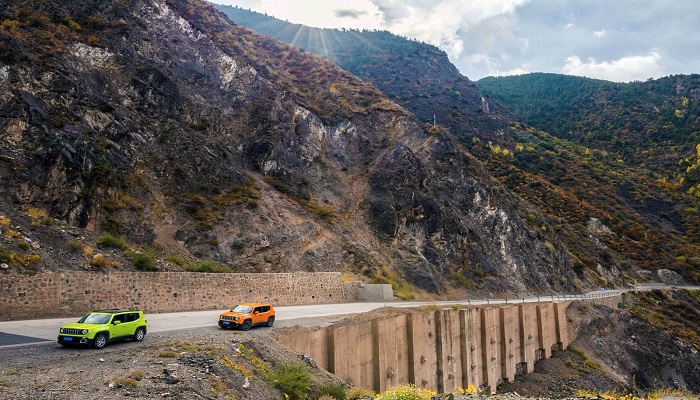
Xinjiang–Tibet Highway (G219): The High, Remote Western Route
The Xinjiang–Tibet Highway (G219) is often described as the highest and most remote of the main overland roads to Tibet. It traverses the western Kunlun and Karakoram fringes and climbs repeatedly to extreme elevations, with long stretches above 4,000 m and some passes reported above 5,000 m. The road is wild, remote and spectacular but requires careful timing and strong logistical support.
Practical Advice For Travellers
- Why choose it: For adventurous travellers seeking extreme landscape, solitude and a very remote overland route.
- Challenges: High altitudes, long distances without services, extreme weather and limited rescue infrastructure. Travel in July–August offers better weather windows.
- Recommendation: Only attempt with well-equipped 4×4 vehicles and experienced local drivers; carry extra fuel, spare parts and emergency provisions.
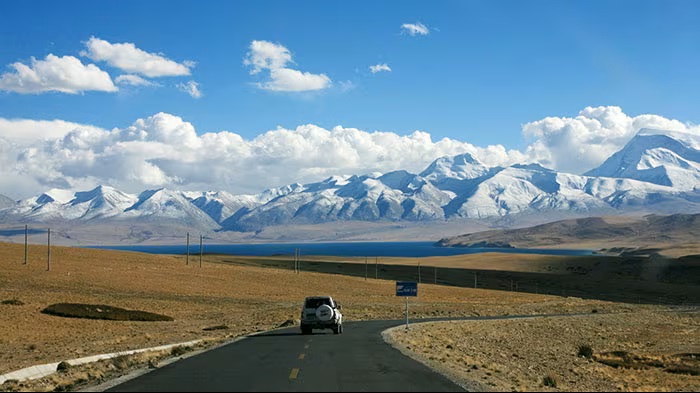
China–Nepal International Road (Friendship Highway): Cross-Border Overland Between Lhasa and Kathmandu
The Friendship Highway (partly overlapping G318) connects Lhasa with the Zhangmu border crossing and then on to Kathmandu, Nepal. This route is historically and culturally important — a major trade and pilgrimage line and one of the most famous trans-Himalayan drives. The highway crosses multiple high passes before descending steeply into the Himalaya toward the Nepalese lowlands.
Practical Advice For Travellers
- Cross-Border Logistics: For foreign travellers, crossing from China into Nepal overland requires visas and customs procedures on both sides; check current regulations and border opening status before planning. Seasonal closures or policy changes can affect availability.
- Why choose it: For dramatic mountain driving and the unique experience of crossing from the Tibetan plateau into the foothills of the Himalaya and then to Kathmandu.
- Safety: Mountain weather, landslides and narrow descents require experienced drivers and flexible timing.
Comparing The Routes: Which Road Is Best For You?
- Most reliable year-round: Qinghai–Tibet Highway (best-maintained, heavy freight traffic).
- Most scenic & culturally diverse: Sichuan–Tibet (G318) and Yunnan–Tibet (G214) corridors.
- Most remote & high: Xinjiang–Tibet (G219).
- Best cross-border adventure: China–Nepal Friendship Highway to Kathmandu.
Choose based on your tolerance for remote travel, interest in cultural stops, acclimatisation needs, time available and appetite for rugged roads.
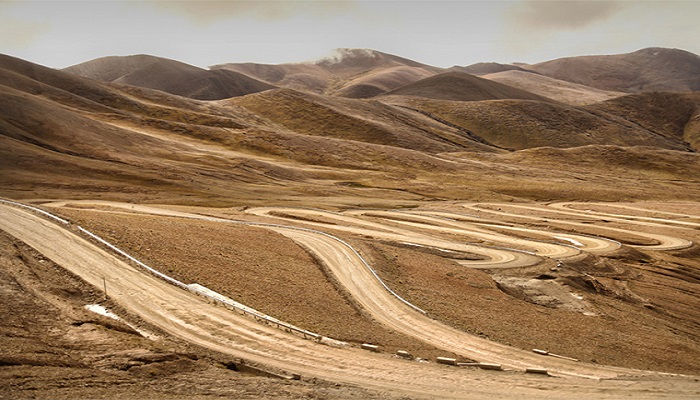
Vehicle Choices, Tours And Self-Drive Considerations
Organised Overland Tours
- Why they work: Operators handle permits, vehicle maintenance, driver expertise, route planning and emergency procedures — a huge advantage in Tibet.
- Who should pick them: International travellers unfamiliar with Chinese regulations, drivers or high-altitude driving.
Private Hire And Self-Drive
- Options: Hire a 4×4 SUV, minivan or coach with an experienced driver; in some areas self-drive is possible but rules and road complexity mean it’s often not recommended for first-time overlanders.
- Permits and chauffeur rules: Foreigners commonly travel in vehicles with licensed drivers because permits and local regulations make independent driving complicated. Check local rules before planning a self-drive.
Freight And Cargo Importance
- Overland roads, especially the Qinghai–Tibet Highway, carry the majority of cargo entering Tibet. For planners this means roads are actively maintained and used by freight convoys — but also that traffic can include heavy trucks, especially near logistic hubs.
Seasonal Planning, Road Safety And Weather
Seasonal Risks
- Monsoon (summer) landslides: Sichuan and Yunnan routes are vulnerable in the rainy season; heavy rain triggers landslides and roadblocks.
- Winter snows and closures: High passes on Xinjiang and Qinghai routes can be snowbound.
- Best months: Summer (June–September) for the highest probability of open roads and milder conditions; July–August are wetter in the southeast routes.
Safety Tips
- Always allow extra days for delays; keep emergency contact numbers; travel with at least one spare day in your schedule for weather or road problems.
- Carry a first-aid kit, warm clothing, extra food and water, a fuel reserve and basic repair tools if self-driving.
- Altitude: Keep habituation days — never push a rapid ascent from a low city straight to very high passes without stopping to acclimatise.
Entry Requirements For Overseas Travellers
- Tibet Travel Permit: Most foreign nationals require a Tibet Travel Permit and must travel with an authorised tour operator. Permits are not issued to independent travellers in many cases — always confirm with an experienced operator.
- Border Crossings: International road crossings (for example, Lhasa–Kathmandu) require customs and immigration checks and may only be open seasonally or to vehicles with special permits. Plan in advance.
Sample Overland Itineraries
Xining → Lhasa (Qinghai–Tibet Highway) — 3–5 Day Overland Itinerary
- Day 1: Xining → Golmud — gradually rise onto the plateau.
- Day 2: Golmud → Wudaoliang / Yanshiping — high tundra landscapes.
- Day 3: Yanshiping → Nagqu → Lhasa — arrive with acclimatisation buffer.
(Adjust pace: add nights to acclimatise and enjoy local attractions like Qinghai Lake or Nagqu plains.)
Chengdu → Lhasa (Sichuan–Tibet G318) — 7–10 Day Cultural Road Trip
- Multiple scenic stops: Kangding, Xinduqiao, Batang, Mangkang, Bangda, Bomi, Nyingchi — each offers cultural and natural highlights. Plan slow to enjoy ethnic towns and reduce altitude shock.
Lhasa → Kathmandu (Friendship Highway) — 4–6 Day Overland Route
- Lhasa → Shigatse → Lhatse → Tingri → Zhangmu (border) → Kathmandu. Border formalities and weather must be checked in advance.
Practical Tips For Smooth Overland Travel
- Always prioritise acclimatisation – add a rest day in Lhasa or intermediate stops.
- Book licensed operators for permits and reliable vehicles.
- Plan alternative dates: the mountain weather is unpredictable; flexibility is your friend.
- Respect local rules and customs – many routes cross sacred landscapes and minority communities.
- Carry contingency supplies – extra fuel, food and emergency gear if you’re remote.
How Can Journey2tibet Help You with Your Tibet Road Trip?
If you’d like a tailor-made overland plan, Journey2tibet organises private and group overland routes, arranges permits, supplies experienced drivers and local guides, and builds itineraries that balance acclimatisation, comfort and exploration. Whether you want a scenic Chengdu–Lhasa drive, the classic Xining–Lhasa highway experience, a cross-border adventure to Kathmandu or a specialised bicycle support plan, Journey2tibet can design a safe, culturally immersive overland trip that fits your timeframe and interests.
Road travel to Tibet is one of the most powerful ways to understand the scale, culture and geography of the plateau — but it’s not casual. With careful planning, realistic pacing for acclimatisation, and support from experienced local operators, your overland journey can become a once-in-a-lifetime adventure: wide skies, endless horizons and roads that feel like the backbone of a living, breathing highland world.


